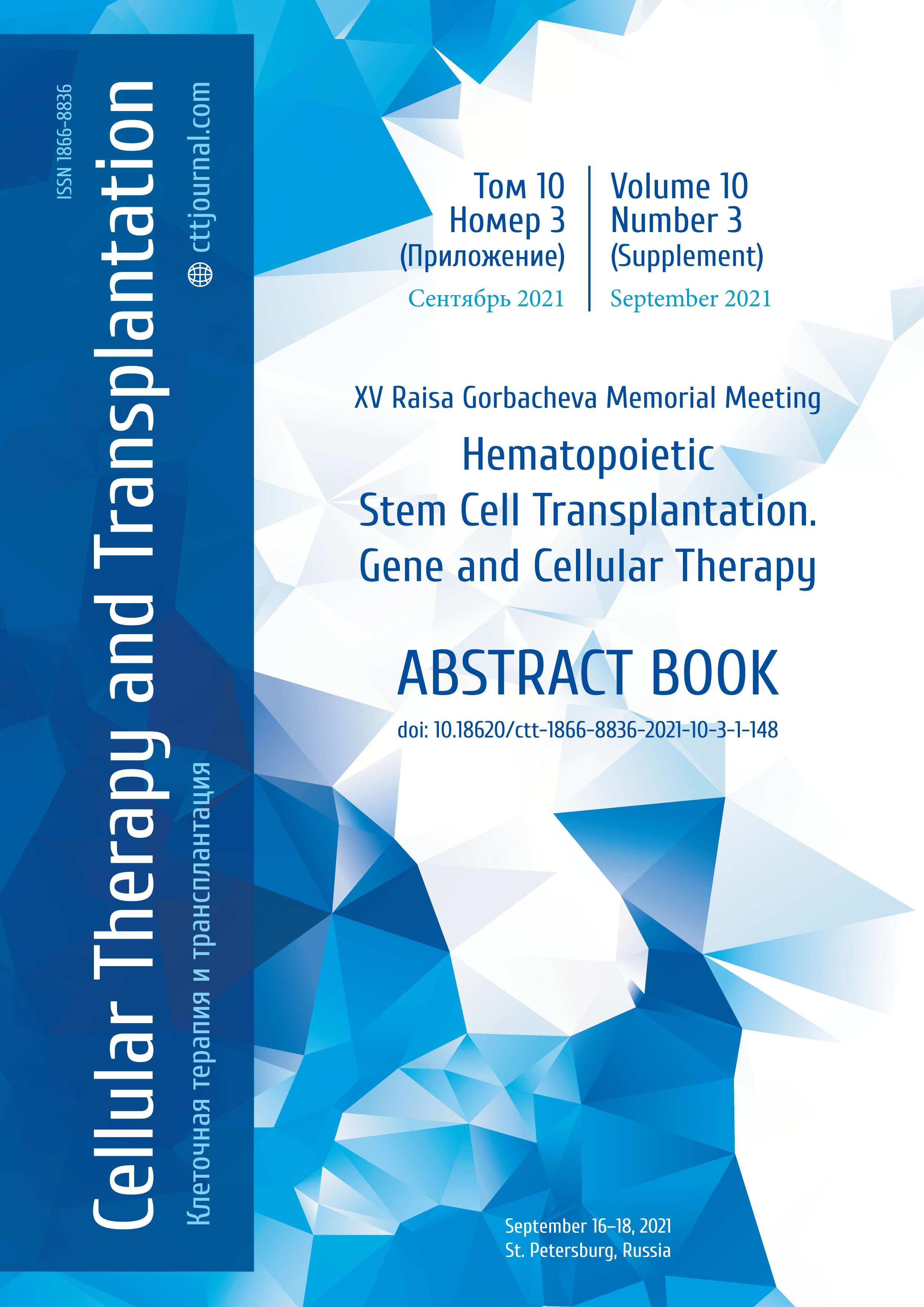AW-02. Chimerism in the population of T-regulatory cells as a predictive marker for late acute graft-versus-host disease development in patients with acute leukemia after allogeneic hematopoietic stem cells transplantation
Darya S. Dubnyak, Natalya V. Risinskaya, Mikhail Y. Drokov, Vera A. Vasilyeva, Olga S. Starikova, Ulyana V. Maslikova, Ekaterina D. Mikhaltsova, Natalia N. Popova, Anna A. Dmitrova, Olga M. Koroleva, Natalia M. Nikiforova, Zoya V. Konova, Mobil I. Akhmedov, Mariya V. Dovydenko, Feruza A. Omarova, Elmira I. Kolgaeva, Julia O. Davydova, Nikolay М. Kapranov, Larisa A. Kuzmina, Irina V. Galtseva, Andrey B. Sudarikov, Elena N.Parovichnikova
National Medical Research Center of Hematology, Moscow, Russia
Correspondence:
Dr. Mikhail Drokov, phone: +7 (495) 614-90-42, e-mail: mdrokov@gmail.com
Summary
Acute graft-versus-host disease (aGVHD) develops in 30-50% of patients after transplantation of allogeneic hematopoietic stem cells (allo-HSCT). T-regulatory cells (T-reg) are the key participants in all immune processes, including aGVHD regulation. According to multiple studies, aGVHD is more likely to occur in patients with complete donor chimerism. Our aim was to evaluate the association between mixed chimerism in T-reg population and development of aGVHD after immunosuppressive therapy withdrawal.
Patients and methods
The study included 42 patients with acute leukemia after allo-HSCT. Detailed characteristics of patient groups are shown in Table 1. On day +90 after allo-HSCT peripheral blood samples were collected from all patients. Further isolation of mononuclear cells was carried out through ficoll density gradient (1.077 g/l). A population of cells with the CD4+ CD25+ phenotype, which is predominantly associated with T-reg, was isolated using magnetic separation (CD4+ CD25+ Regulatory T Cell Isolation Kit, Milteney Biotec, Germany). DNA was extracted from the obtained cell suspension using Ampli Prime RIBO-prep kits for DNA/ RNA isolation. Chimerism in DNA samples was determined using STR-PCR (polymerase chain reaction with a panel of primers to human short tandem repeat loci). The donor chimerism percentage was calculated using standard formulas. Statistical analysis of the data was performed using R 4.1. The Mann-Whitney U test was used to reveal any statistical differences in two independent samples. Competing risk analysis was performed to assess probability of aGVHD. Gray’s test was used to compare differences between two groups. P-value less than 0.05 was considered as significant.
Table 1. Patient characteristics

Results
Chimerism in bone marrow and peripheral selected T-regs was determined. Significant differences were seen in patients with late aGVHD induced by immunosuppressive therapy withdrawal (p=0.0096; p=0.0097). Also, we assessed probability of acute GVHD depended on different levels of chimerism in T-reg. Thus, the count of recipient T-regs was more than 17.5%, whereas probability of developing aGVHD was significant higher, i.e., 66.7% versus 5.6% (p=0.001).
Conclusion
Our data has demonstrated that, even long after allo-HSCT, the patients’ bone marrow cells have donor origin, while some peripheral immune cell populations including regulatory T cells are of a mixed type. Considering its genetic origin, it seems to be controversial the ability of these mixed donor-recipient T-reg to realize its regulatory function and especially previously described by Vigouroux et al. its antigen-dependent regulation. If immunosuppressive therapy begins to be withdrawn after day +90 in such immunological conditions, full donor chimerism in bone marrow will induce development of acute GVHD.
Keywords
T-regulatory cells, graft-versus-host disease, chimerism, acute leukemia.


